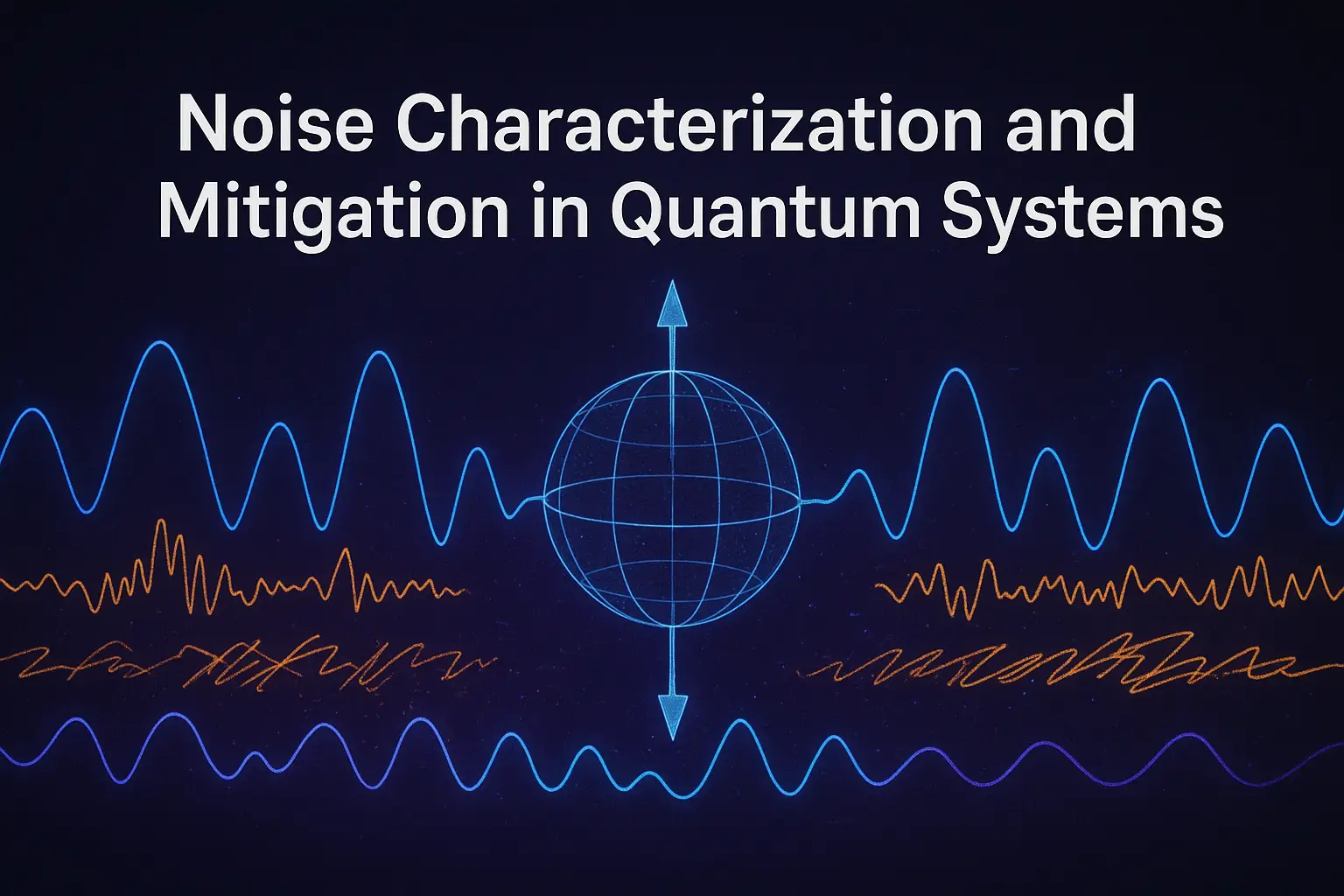Table of Contents
- Introduction
- Importance of Noise Characterization
- Types of Noise in Quantum Systems
- Markovian vs Non-Markovian Noise
- Relaxation (T₁) and Dephasing (T₂)
- Crosstalk and Control Errors
- Gate and Readout Errors
- Noise Spectroscopy Techniques
- Quantum Process Tomography
- Gate Set Tomography (GST)
- Randomized Benchmarking (RB)
- Interleaved and Simultaneous RB
- Quantum Error Correction (QEC)
- Quantum Error Mitigation (QEM)
- Zero-Noise Extrapolation
- Probabilistic Error Cancellation
- Dynamical Decoupling
- Decoherence-Free Subspaces
- Machine Learning for Noise Estimation
- Conclusion
1. Introduction
Quantum systems are inherently sensitive to environmental and control-induced noise, which can degrade quantum coherence and reduce the reliability of computation and communication. Characterizing and mitigating noise is essential for building fault-tolerant quantum systems.
2. Importance of Noise Characterization
- Enables accurate quantum simulation
- Guides hardware improvements
- Informs error correction protocols
- Validates quantum algorithm fidelity
3. Types of Noise in Quantum Systems
- Bit-flip (X)
- Phase-flip (Z)
- Depolarizing
- Amplitude damping
- Phase damping
- Leakage and crosstalk
4. Markovian vs Non-Markovian Noise
- Markovian: memoryless, described by Lindblad master equation
- Non-Markovian: involves memory effects and history-dependent evolution
5. Relaxation (T₁) and Dephasing (T₂)
- T₁: energy loss from excited state to ground
- T₂: loss of phase coherence
T₂ ≤ 2T₁ due to fundamental decoherence channels.
6. Crosstalk and Control Errors
- Crosstalk: interference between adjacent qubits or control lines
- Control errors: miscalibration of pulses, timing, or frequencies
7. Gate and Readout Errors
- Imperfect quantum gates introduce unitary and stochastic errors
- Readout infidelity arises from detector noise and SPAM (state preparation and measurement) errors
8. Noise Spectroscopy Techniques
Used to characterize spectral density of noise:
- Ramsey fringes
- Spin echo
- CPMG (Carr-Purcell-Meiboom-Gill)
- Filter function formalism
9. Quantum Process Tomography
Fully reconstructs quantum operations:
- Measures how input states transform under a noisy process
- Sensitive to SPAM errors
- Not scalable for large systems
10. Gate Set Tomography (GST)
- Provides complete, self-consistent characterization of gates, SPAM, and errors
- Scalable to few-qubit systems
- Requires long sequence fitting and high-fidelity measurements
11. Randomized Benchmarking (RB)
- Uses random Clifford gate sequences
- Estimates average gate error
- Robust to SPAM
- Easily extended to interleaved and simultaneous variants
12. Interleaved and Simultaneous RB
- Interleaved RB: measures fidelity of a specific gate
- Simultaneous RB: characterizes crosstalk and parallel gate performance
13. Quantum Error Correction (QEC)
Encodes logical qubits across multiple physical qubits:
- Detects and corrects bit-flip and phase-flip errors
- Requires fault-tolerant thresholds
- Examples: surface code, Bacon-Shor code, Steane code
14. Quantum Error Mitigation (QEM)
Reduces error in computation outputs without full QEC:
- Useful for NISQ devices
- Requires calibration and post-processing
15. Zero-Noise Extrapolation
Runs circuits at various noise levels and extrapolates to zero-noise limit:
- Achieved by scaling pulse durations or gate count
- Increases sampling cost
16. Probabilistic Error Cancellation
Applies inverse noise map to correct measured data:
- Needs accurate noise characterization
- Cost grows exponentially with error rate
17. Dynamical Decoupling
Pulse sequences designed to cancel low-frequency noise:
- CPMG, XY4, Uhrig schemes
- Preserves coherence during idle periods
18. Decoherence-Free Subspaces
Uses symmetry to encode quantum information in subspaces immune to collective noise:
- Particularly useful for dephasing environments
- Requires careful logical encoding
19. Machine Learning for Noise Estimation
- Neural networks and Bayesian models used to model noise sources
- Adaptive noise filtering
- Improves calibration and feedback
20. Conclusion
Noise is the primary obstacle to scalable quantum computation. Combining rigorous noise characterization with both hardware-aware and software-based mitigation techniques is key to building reliable quantum devices capable of executing useful algorithms.


